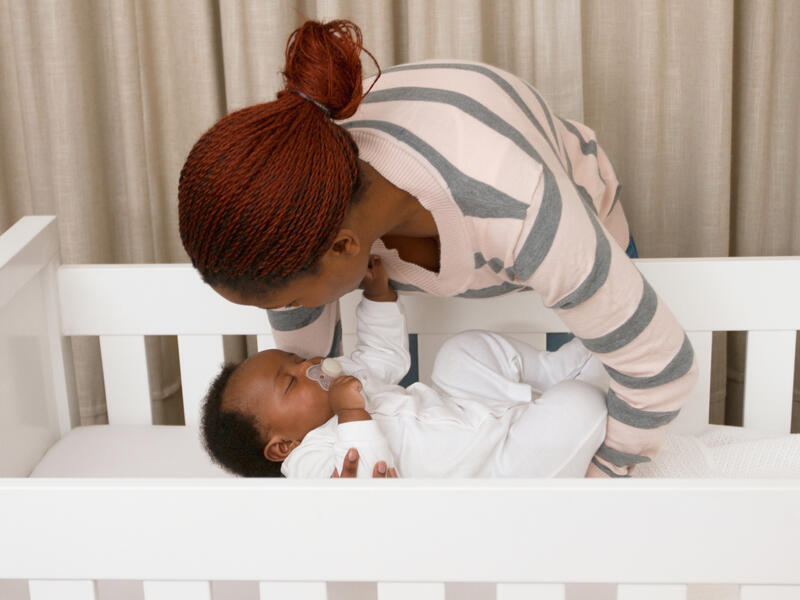It is common for babies 0 to 6 months to sleep a lot. In fact, your baby is probably sleeping for a total of 15 to 15-1/2 hours a day.
An infant’s sleep pattern generally starts out about half and half (about eight hours at night and seven and a half hours during the day, spread out over three naps).
Between the ages of 3 to 6 months, your baby may likely increase the nighttime to about 10 hours and reduce the need for naptime sleep to five hours in the day, spread over three naps.
No matter when or how much your baby sleeps, you will want to provide a safe sleep environment for your baby. Follow our checklist to ensure your baby has a safe place to sleep.
Alone in my crib
- Sharing your bed with your baby is not a safe practice. Rather than putting baby in bed with you, place your baby’s crib or bassinet in your room.
Back to sleep
- Put your baby on their back when sleeping.
Crib check
- Remove stuffed animals and blankets from crib; blankets and other soft surfaces can block baby’s airway during sleep.
- No bumper pads and positioning wedges.
- Crib meets safety standards; new cribs have to meet safety regulations to be sold in the United States so be careful with older or borrowed cribs.
- Crib slats are no more than 2-3/8 inches apart (you shouldn’t be able to fit a soda can between the slats) to prevent your child’s head from getting caught between the bars.
- If the crib is near a window with blinds, cut off the pull cords or use cord shorteners.
- Crib’s headboard and footboard are free of large cut-outs.
- Mattress is firm and flat; no more than two fingers should fit between the mattress and the side of the crib.
- Crib sheet is fitted.
- Clip strings or ribbons off hanging mobiles; keep any strings six inches or shorter.
- Create a safety zone around the crib by positioning it away from windows, heaters, lamps, wall decorations, cords, and furniture your child could climb on.
Clothing for sleep
- Use a sleep sack – no blankets.
- Check that your child is wearing flame-retardant sleepwear.
- Remove all drawstrings from your child’s clothing.
General safety
- Make sure nightlights in the room are not touching any fabric like bedspreads or curtains.
- Have a working smoke alarm and carbon monoxide detector. Change the batteries twice a year.
- Do not smoke around your baby.
For more answers to your safety questions, call or visit a Sanford Children’s Safety Center.
Learn more
- Safe sleep habits protect your baby from SIDS
- Newborn basics: Bonding with your baby
- Infant colds: What’s normal and what’s not
…
Posted In Children's, Family Medicine, Parenting, Sleep Medicine
